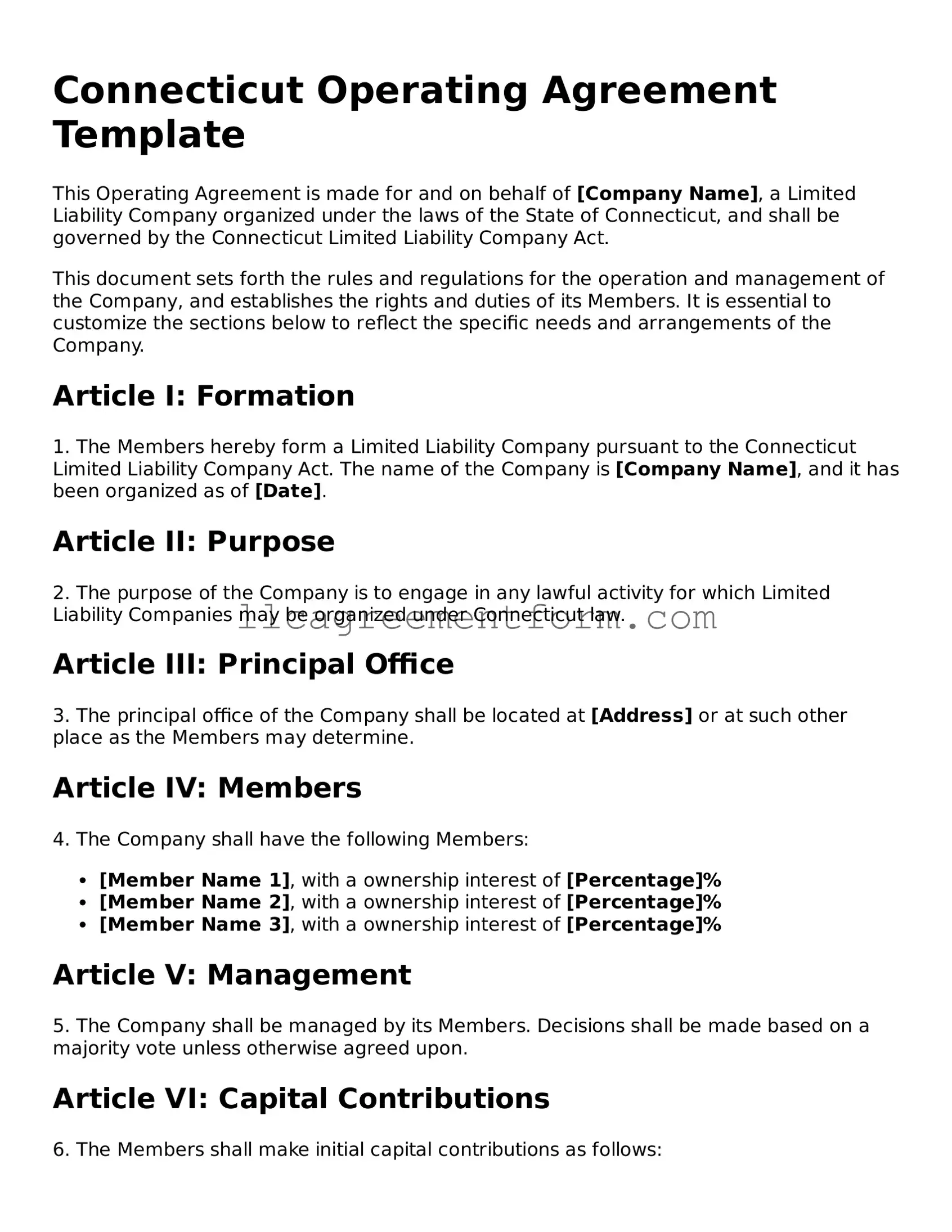In Connecticut, the Operating Agreement is a crucial document for Limited Liability Companies (LLCs) as it outlines the internal structure and operational guidelines of the business. This agreement serves as a roadmap for how the company will be managed and how decisions will be made, ensuring that all members are on the same page. It typically includes essential elements such as the roles and responsibilities of members, the distribution of profits and losses, and procedures for adding or removing members. Additionally, the Operating Agreement addresses how disputes will be resolved and what happens in the event of a member's departure or the dissolution of the company. By establishing clear expectations and procedures, this document helps to prevent misunderstandings and conflicts among members, fostering a cooperative environment for business operations. Whether you're starting a new LLC or revising an existing agreement, understanding the components of the Connecticut Operating Agreement is vital for ensuring compliance and promoting a healthy business relationship among members.
